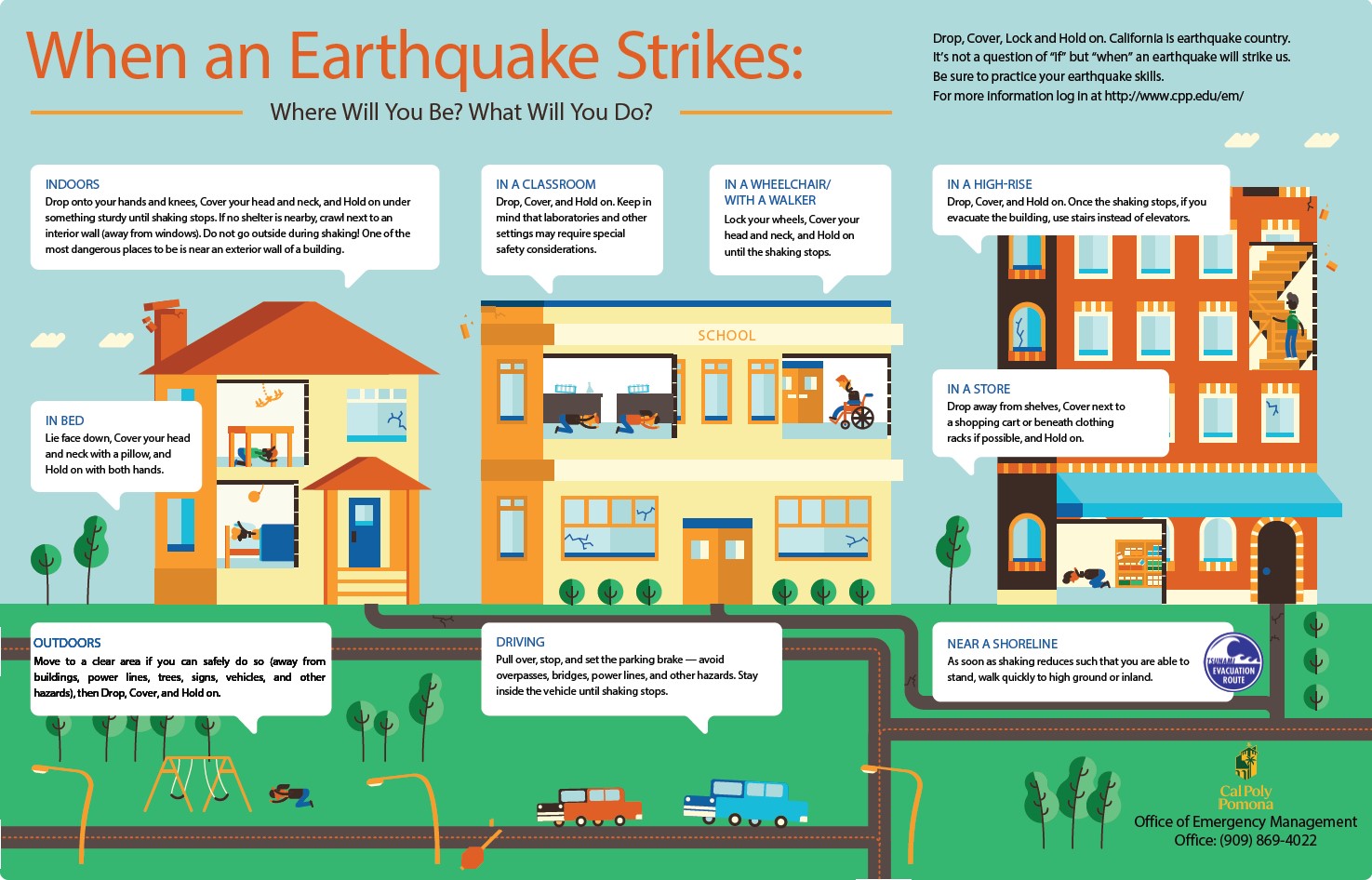Earthquake Preparedness

Before the Earthquake
- Become familiar with the space you occupy and develop a disaster plan before the drill. Decide how you will communicate with coworkers, your peers, or family members in the event of an earthquake.
- Secure your space by identifying hazards and securing moveable items.
- Build a kit and organize disaster supplies in convenient locations.
- If at home, you may minimize financial hardship by organizing important documents, strengthening your property from possible damages, and considering insurance.
![]()
![]()
![]()
During the Earthquake
- DROP, LOCK, COVER, and HOLD ON when the earth shakes.
![]()
After the Earthquake
- Improve your safety by evacuating if necessary, helping the injured, and preventing further injuries or damages. Check for structural damage, fires, and gas leaks.
- After the immediate threat has passed, determine your level of preparedness, and adjust your emergency plan as necessary.
![]()
Tips - What Do I Need to Do?
When on campus
When at home
When in bed (University Housing Services)
When using a wheelchair or walker (Disability Resource Center)
Safety Alert Messaging
- Ensure that you receive up-to-date safety alert information by updating your personal information in BroncoDirect.
- Faculty and staff should ensure their information is updated in the Emergency Notification System by logging into the Safety Alert website or call the IT Help Desk at (909) 869-6776.